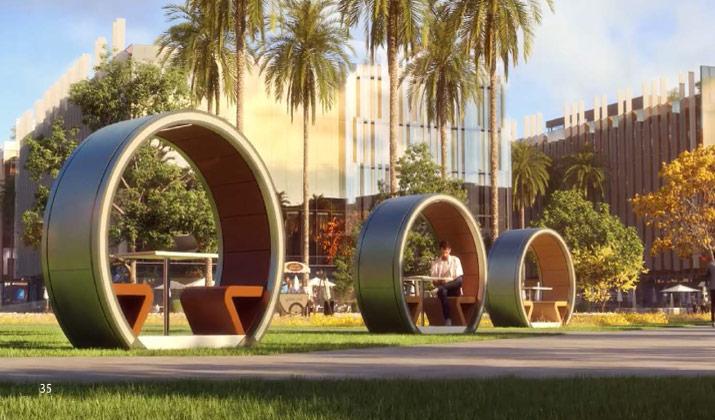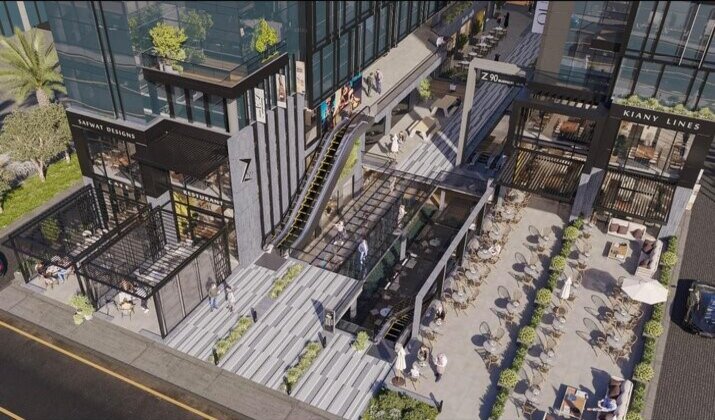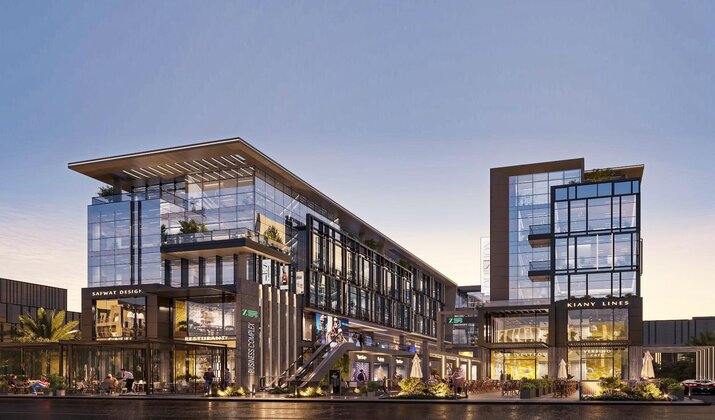Are you up-to-date with the commercial property prices in Downtown?
Downtown Cairo, with its wide boulevards, ornate facades, and enduring legacy as the beating heart of modern Egypt, has always been more than just a business hub. It is both a symbol of Cairo’s cosmopolitan past and a contested space where commerce, culture, and politics intersect. Over the past two decades, commercial property prices in Downtown have undergone significant changes, reflecting wider transformations in the Egyptian economy, shifts in urban planning, and evolving patterns of demand. Today, the cost of securing a shopfront, an office, or a building in the area tells a story not just of real estate, but of Cairo itself.
Table of Contents
ToggleThe Historical Core of Commerce
Downtown Cairo, known locally as Wust el-Balad, was originally designed in the late 19th century to echo the European urban model. Its grid-like streets and French-style architecture made it the city’s commercial and cultural centerpiece. For decades, the neighborhood housed banks, publishing houses, insurance firms, and the grand department stores that shaped Egypt’s middle-class consumer culture.
Commercial rents and property values here were once the highest in the country, a natural consequence of being the epicenter of both economic life and social prestige. Owning or renting space in Talaat Harb Street, for example, conferred status. Companies and individuals were willing to pay a premium to be in proximity to the financial institutions, ministries, and cultural institutions concentrated in the district.
A Gradual Decline
By the 1980s and 1990s, however, Downtown Cairo began to lose some of its appeal as a commercial hub. Urban congestion, lack of parking, and the aging condition of buildings pushed some businesses to relocate to newer districts, especially along the Nile Corniche and later in emerging suburbs like Nasr City, New Cairo, and Sheikh Zayed.
As many high-profile firms moved out, Downtown rents stagnated for a time, especially in office spaces. The decline in demand for formal corporate offices, combined with strict rent control laws that kept many tenants locked into contracts signed decades earlier, created a dual market. On one side were long-standing tenants paying minimal rents due to outdated legal agreements. On the other were new businesses forced to pay significantly higher market rates, which still lagged behind the soaring values of suburban developments.
Revival Efforts and Rising Prices
In the 2000s and 2010s, the Egyptian government, alongside private developers, began to recognize Downtown Cairo’s cultural and commercial potential. Efforts to restore historic buildings, renovate public squares, and revitalize pedestrian zones breathed new life into the district. These initiatives contributed to a gradual but noticeable rise in property values.
For retail in particular, Downtown remained unmatched in terms of foot traffic. Streets such as Talaat Harb, Qasr al-Nil, and Champollion continued to attract shoppers, students, and professionals. Small shops selling books, clothes, and electronics enjoyed steady demand, ensuring commercial units remained valuable even when offices struggled.
At the same time, a wave of interest in boutique cafes, art spaces, and co-working hubs began reshaping parts of Downtown. Creative entrepreneurs saw opportunity in the area’s mix of affordability (compared to suburban malls) and cultural cachet. As a result, commercial rents for certain properties began climbing sharply, especially for well-located ground-floor units.
The Impact of Political and Economic Shifts
The years following 2011 introduced new uncertainty. Political turbulence affected all sectors of the Egyptian economy, including real estate. Some investors hesitated to commit, fearing instability. Yet Downtown Cairo, with its proximity to Tahrir Square and government institutions, remained central to national life. Property owners who could endure periods of vacancy often found that demand rebounded quickly once stability returned.
More recently, Egypt’s economic reforms, currency devaluations, and inflationary pressures have reshaped the calculus of commercial real estate. On the one hand, rising construction costs and scarcity of high-quality renovated spaces have pushed up purchase and rental prices. On the other, some tenants struggle to afford the new rates, leading to higher turnover in certain segments.
Nonetheless, Downtown’s symbolic and practical importance ensures that demand persists, particularly among businesses that rely on visibility and centrality rather than suburban convenience.
Current Market Dynamics
Today, Downtown Cairo’s commercial property market can be described as fragmented but steadily appreciating. Several key trends define the pricing landscape:
Prime Retail Commands Premiums
Street-level shops in high-traffic areas remain among the most expensive properties. Businesses ranging from local clothing retailers to multinational fast-food chains are willing to pay high rents for visibility and constant footfall. A small shop on Talaat Harb Street, for instance, may command far higher rent per square meter than a larger office in a quieter side street.
Offices Vary Widely in Value
Demand for traditional office space has shifted. Many companies have relocated to more modern premises in suburban developments with better infrastructure. However, certain government-related firms, NGOs, and creative industries continue to value Downtown offices. Renovated buildings with modern amenities can attract high-paying tenants, while neglected properties struggle to compete.
Heritage Properties as Investments
Entire buildings, particularly those with historic facades, have become attractive to investors interested in restoration and adaptive reuse. Though expensive to renovate, these properties often appreciate significantly in value and can be repositioned as boutique hotels, cultural centers, or high-end offices.
Co-working and Creative Spaces
A notable trend has been the conversion of old apartments and offices into shared workspaces, galleries, or cafés. The younger demographic, drawn by Downtown’s vibrancy and centrality, sustains this demand. Prices for such units are more flexible, but the cumulative effect has been to raise the perceived value of commercial property in the district.
Inflation and Currency Effects
The devaluation of the Egyptian pound has had mixed effects. For foreign investors or companies earning in stronger currencies, Downtown property can appear undervalued. For local businesses, however, the cost of leasing space has risen sharply in real terms, often making Downtown an expensive choice relative to alternatives.
Challenges for the Market
Despite these positive trends, Downtown Cairo’s commercial property market faces several persistent challenges:
Infrastructure Strain: Aging utilities, limited parking, and traffic congestion continue to weigh on the district’s competitiveness.
Regulatory Complexities: Old rent control laws, fragmented ownership structures, and bureaucratic hurdles complicate transactions and limit fluidity in the market.
Maintenance Costs: Historic buildings, though beautiful, require costly upkeep. Without consistent investment, many risk deterioration, which undermines their commercial value.
Competition from New Cities: Government-led expansion into new capitals and suburbs siphons demand away from Downtown, particularly for large corporate tenants seeking modern facilities.
Conclusion
Commercial property prices in Downtown Cairo mirror the neighborhood’s layered identity: historic yet evolving, prestigious yet challenged, expensive yet still attainable compared to newer districts. For shop owners, visibility and cultural vibrancy justify the cost. For investors, heritage and centrality offer long-term value. And for Cairo as a whole, Downtown remains a reminder that even in a city of constant expansion, the old heart continues to beat, shaping both the economy and the imagination of its people.
Frequently Asked Questions
Why has Downtown Cairo historically been such a valuable commercial district?
Downtown Cairo, designed in the late 19th century, was modeled on European capitals, with broad boulevards, ornate buildings, and a central location near government ministries and cultural institutions. For much of the 20th century, it was the heart of Egypt’s financial and social life. Banks, publishing houses, insurance firms, and department stores concentrated there, making it the most prestigious location for both commerce and culture. This centrality meant businesses were willing to pay premium prices to secure offices or retail space in the area, ensuring property values remained among the highest in the country.
What are the current pricing dynamics for commercial properties in Downtown Cairo?
Commercial property prices vary widely depending on property type and location:
Retail Units: Ground-floor shops in high-footfall areas such as Talaat Harb Street command some of the highest rents in the city on a per-square-meter basis. Visibility and pedestrian traffic make these units especially valuable.
Offices: Demand is uneven. Renovated offices with modern amenities can fetch strong prices, while older, poorly maintained spaces remain less competitive.
Heritage Buildings: Investors seek entire buildings with historic facades, often for adaptive reuse as boutique hotels, galleries, or cultural centers. These properties, while costly to renovate, have high long-term appreciation potential.
Flexible/Creative Spaces: Apartments and offices converted into co-working or cultural hubs have created a niche market. Their rents vary but contribute to raising the perceived value of Downtown spaces overall.
